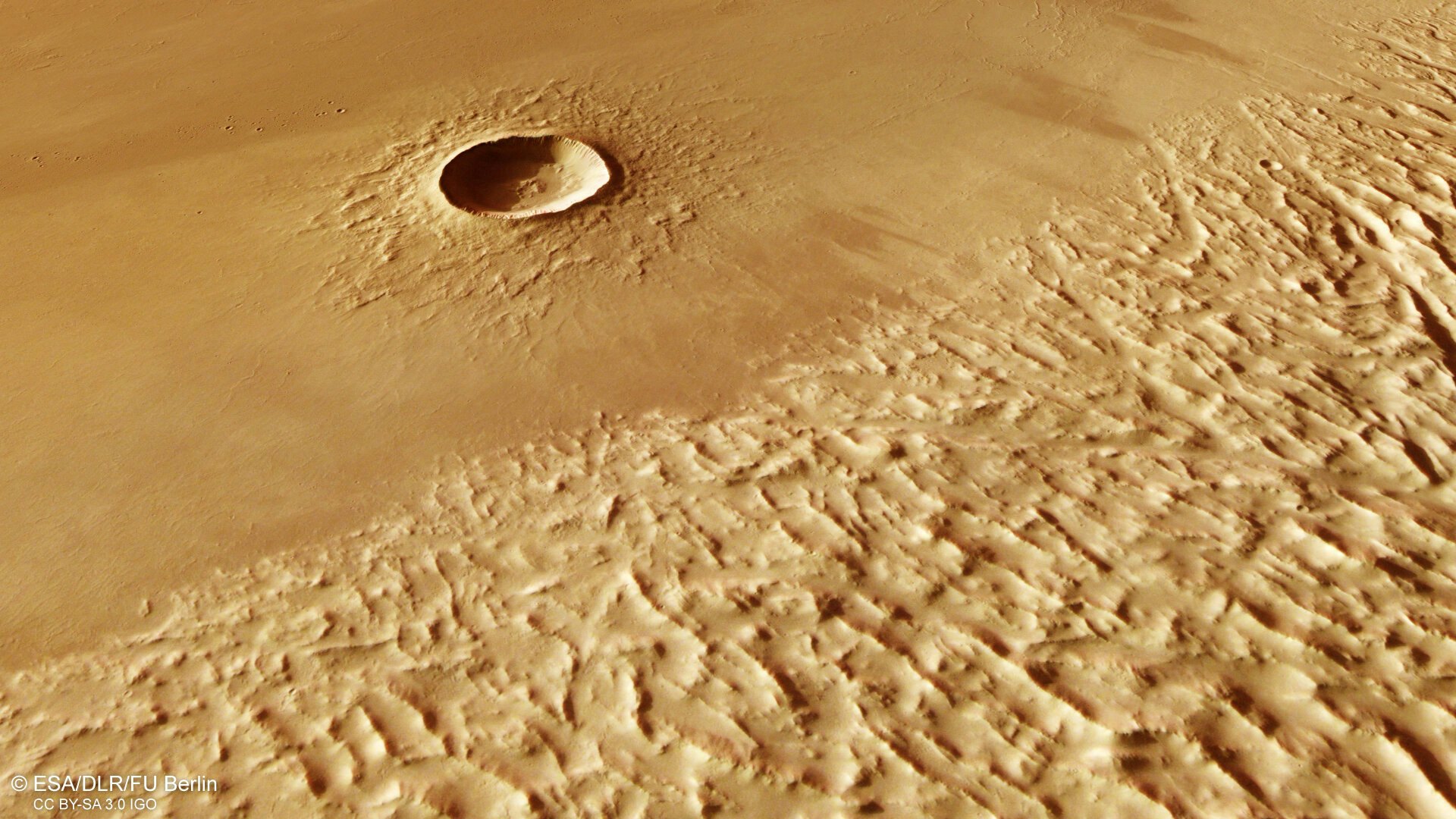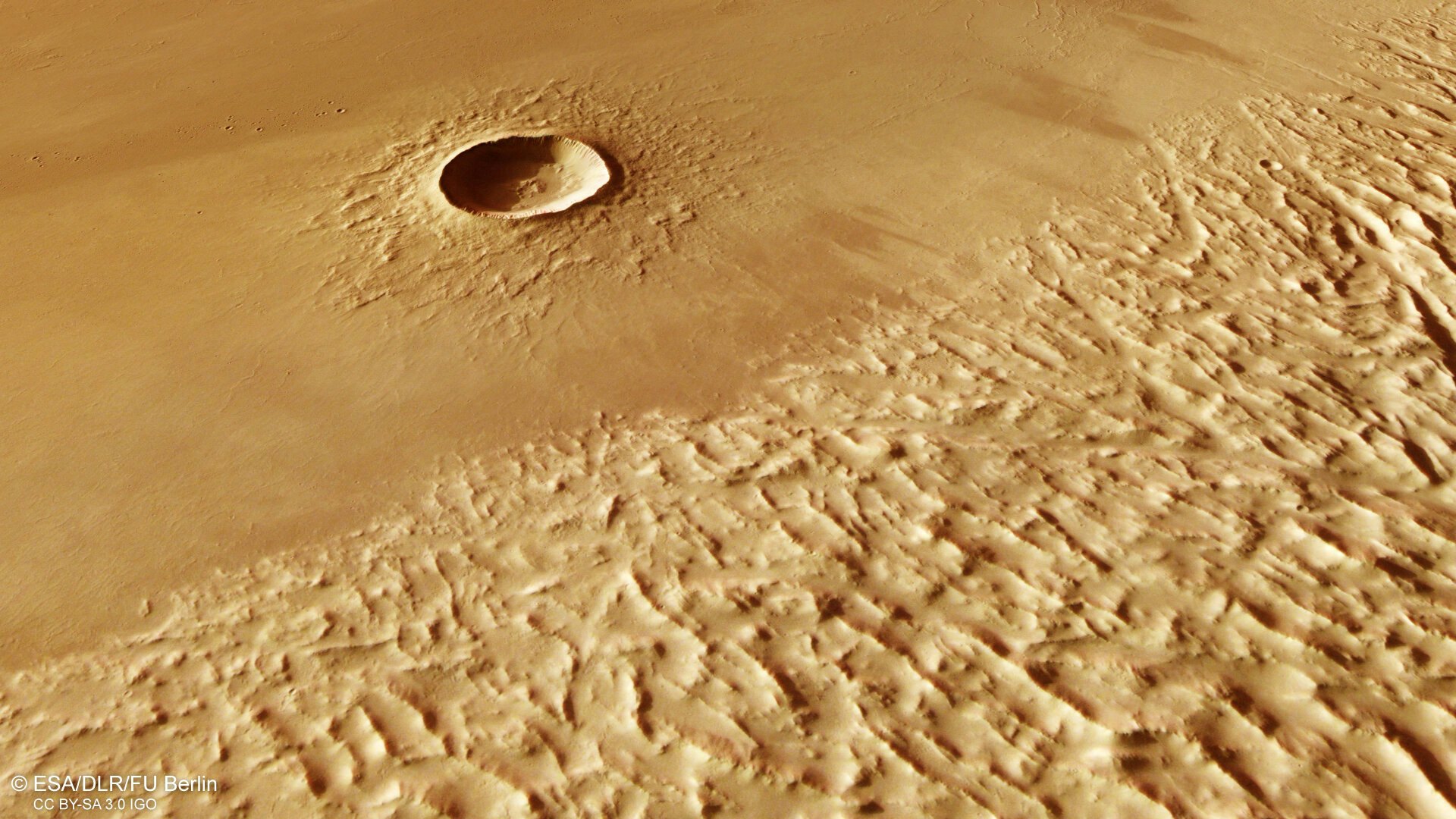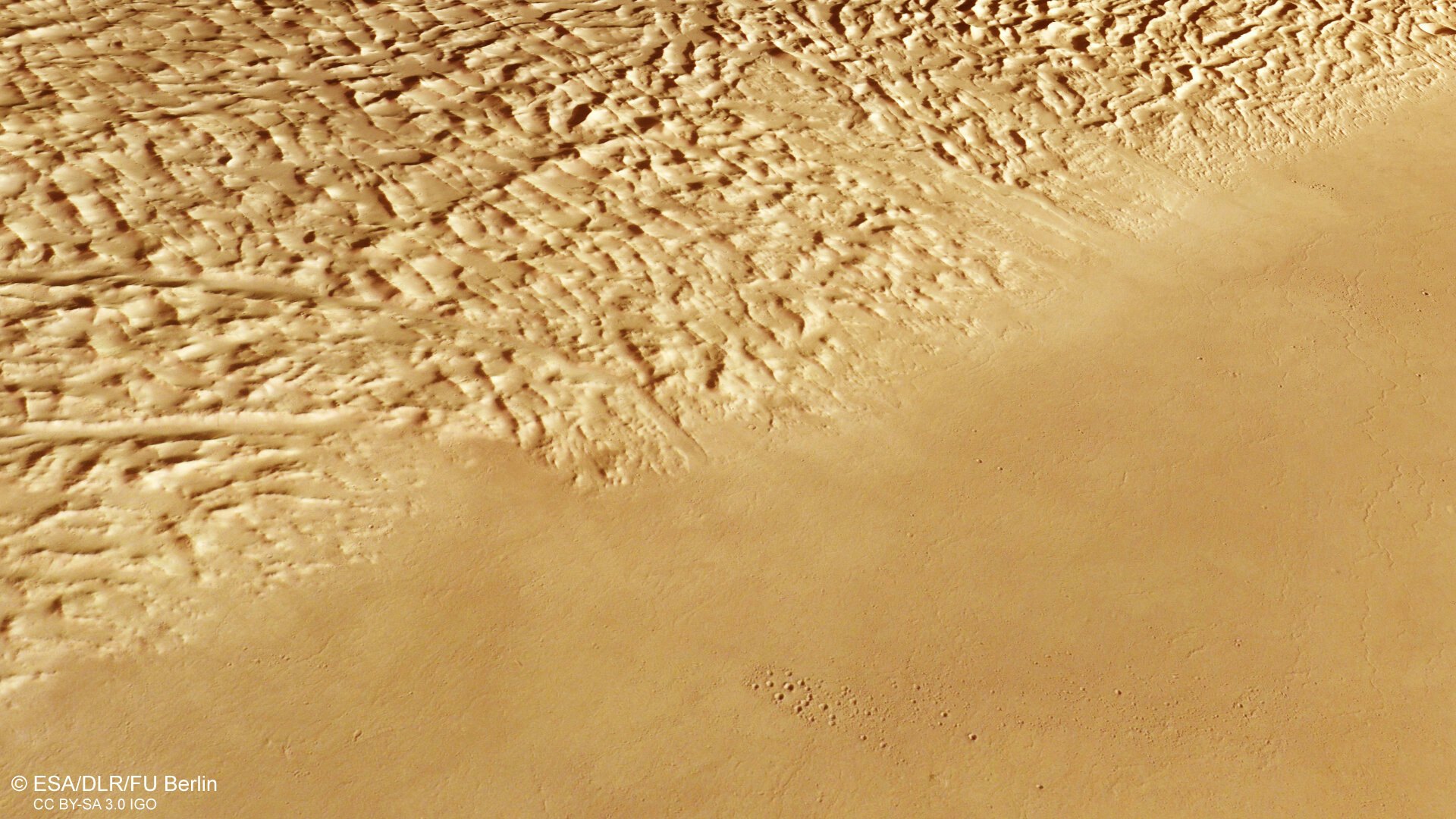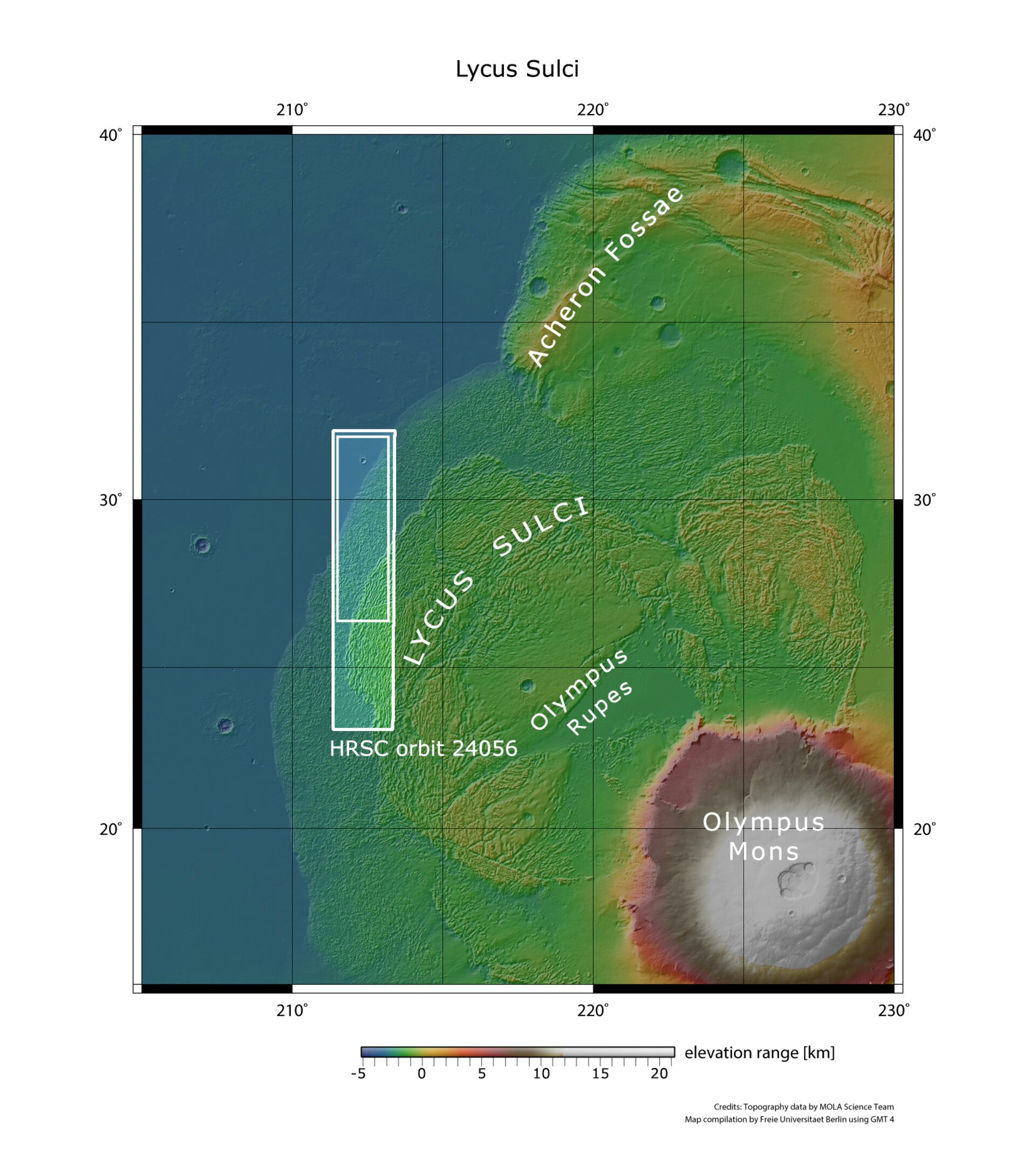
A spacecraft has delivered fantastic images of Mars, showcasing textured terrain and a lone crater near the planet’s most famous landmark.
Olympus Mons is the Solar System’s largest volcano. It’s so large, that the size of this shield volcano is roughly the size of the state of Arizona, according to NASA. Its height is roughly 2.5 times higher than Mount Everest rises above sea level on Earth, according to the European Space Agency (ESA). New images from Mars Express, a 20-year-old ESA mission, focus on an exciting place at the fringe of the volcano.
“This tan-colored slice of Mars is largely covered by wrinkled, crumpled terrain,” ESA officials write in an image description. Mars Express took the images on January 18, and ESA published them on August 23.

What did the spacecraft see?
The crunchy-looking patch of elevated land is called Lycus Sulci. “It is not yet understood how this feature formed or how it relates to the formation of Olympus Mons itself,” according to NASA.
However, ESA proposes an explanation. When the volcano’s lava poured out, it encountered bedrock containing ice and water. When it subsequently melted, the rocky rim around Olympus Mons broke off and catalyzed a landslide.
“As the landslides moved away from Olympus Mons and traveled across the Martian surface they became alternately compressed and stretched — crumpled and pulled apart. This created the characteristic wrinkles seen in these new images of Lycus Sulci,” according to ESA.
Mars Express’ images focus on a place where Lycus Sulci meets a creamy-colored plain. A five-mile-wide crater called Yelwa Crater decorates the scene. Yelwa Crater points north.

Mars Express took a perpendicular view of the planet’s surface, and also snapped angled shots like the ones featured above and below.

The images, taken by Mars Express’ High-Resolution Stereo Camera, are accompanied by data about this land’s topography.
Observations like these are critical to understanding Mars’ ancient past. Rocks and formations preserve traces of planetary processes and help scientists narrow down their best guesses about whether or not Mars could have sprung forth and supported life.

“Lower parts of the surface are shown in blues and purples, while higher altitude regions show up in whites and reds, as indicated on the scale to the top right,” Mars Express officials explain in a description of their topographical image.

This view shows where Olympus Mons is located in relation to the plain, Yelwa Crater and Lycus Sulci.
Olympus Mons has a volume that far surpasses Earth’s largest volcano, Mauna Loa on Hawaii. The Martian volcano has a volume “about 100 times larger than that of Mauna Loa,” according to NASA. “In fact, the entire chain of Hawaiian islands (from Kauai to Hawaii) would fit inside Olympus Mons!”
Scientists think the Martian volcano owes its huge size to static surface crust, where the fluid lava can build up over time. According to the space agency, its last eruption was 25 million years ago.
Thanks to robotic missions like Mars Express, scientists have a peek at features impossible to create on Earth.







